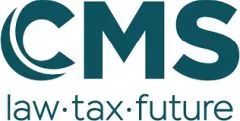The Regulatory Reform (Fire Safety) Order (RRO) is still on course to come into force on 1st October 2006. An entry level guide and six of the eleven sector guides that the Office of the Deputy Prime Minister (ODPM) promised would be made available before the introduction of the RRO have now been issued.
The RRO will affect all non-domestic premises in England and Wales and the ODPM’s guidance will therefore be of particular interest if you are "a responsible person" for the purpose of the RRO.
The "responsible person" for business premises will normally be the employer but depending on who controls particular areas it can also be a landlord or a managing agent or someone who is self-employed) an employer, a charity or a contractor.
The guides now available are:-
- an entry level guide to making your premises safe from fire
- a guide for offices and shops
- a guide for factories and warehouses
- a guide for sleeping accommodation
- a guide for educational premises
- a guide for small (up to 60 people) and medium (up to 300 people) places of assembly, including public houses, clubs and churches
- a guide for large (more than 300 people) places of assembly – including night clubs, common areas of shopping malls and premises that adjoin other complexes, such as shopping centres
For more information on the guides, including details of how to download copies, click here.
This article was written for Law-Now, CMS Cameron McKenna's free online information service. To register for Law-Now, please go to www.law-now.com/law-now/mondaq
Law-Now information is for general purposes and guidance only. The information and opinions expressed in all Law-Now articles are not necessarily comprehensive and do not purport to give professional or legal advice. All Law-Now information relates to circumstances prevailing at the date of its original publication and may not have been updated to reflect subsequent developments.
The original publication date for this article was 16/06/2006.


